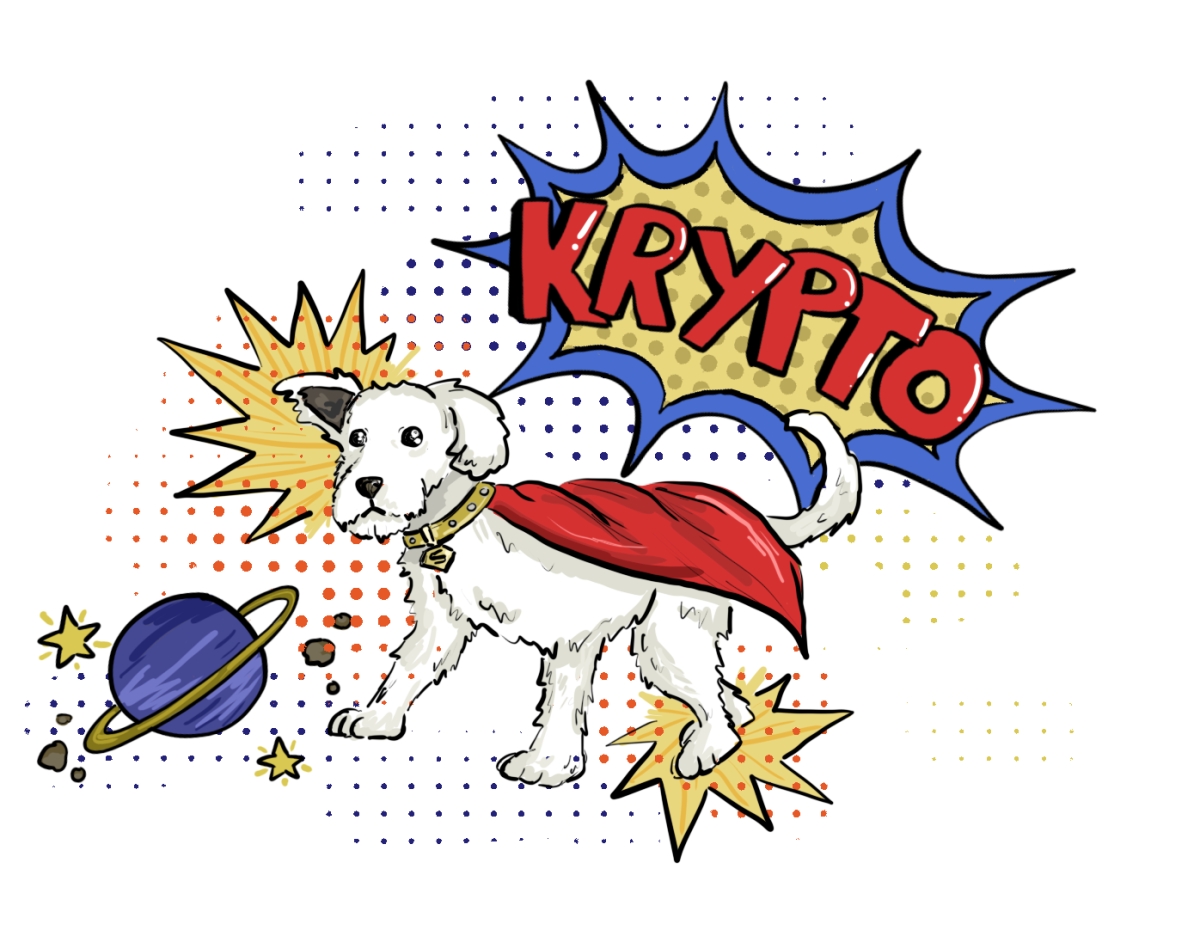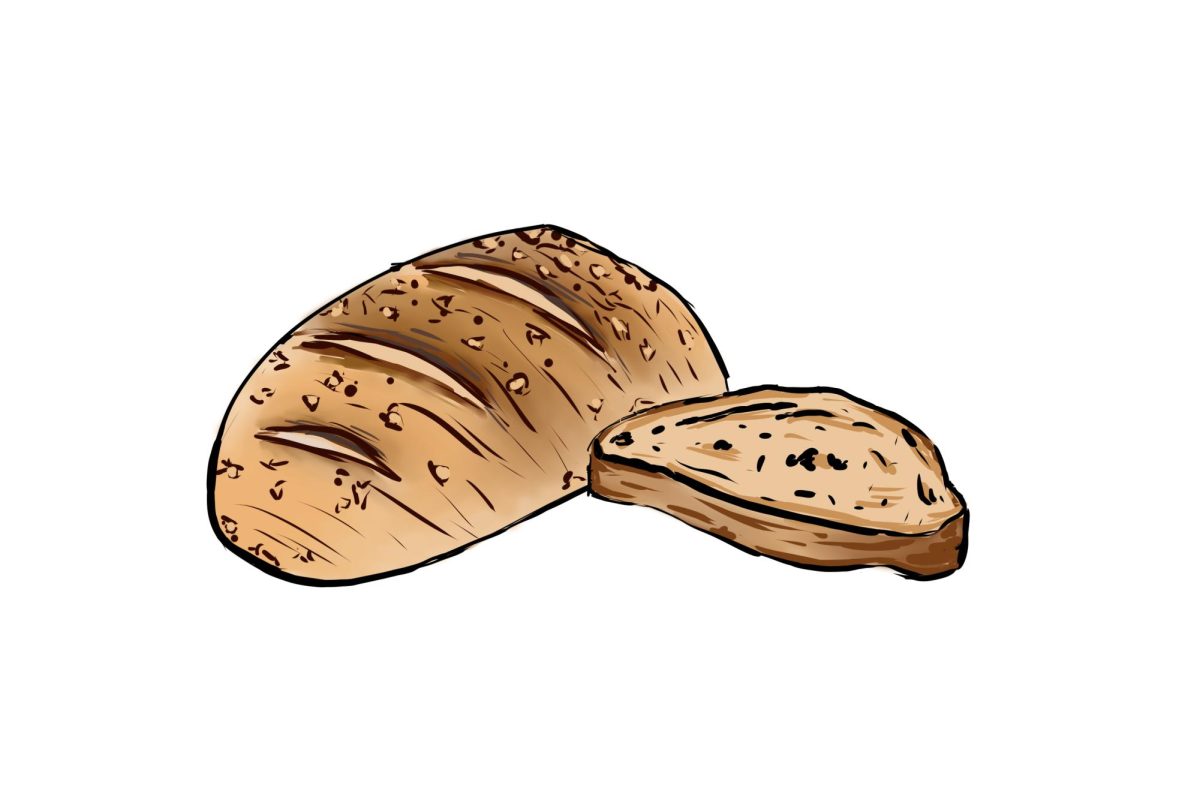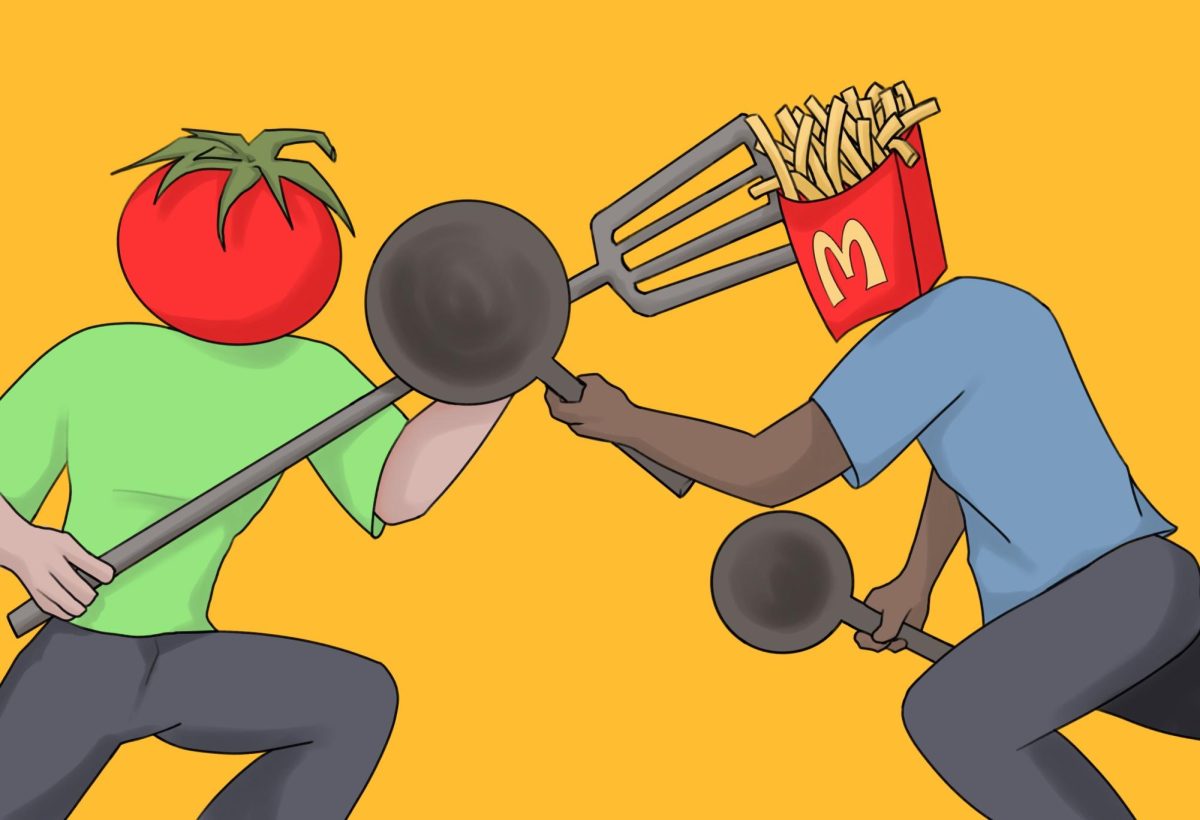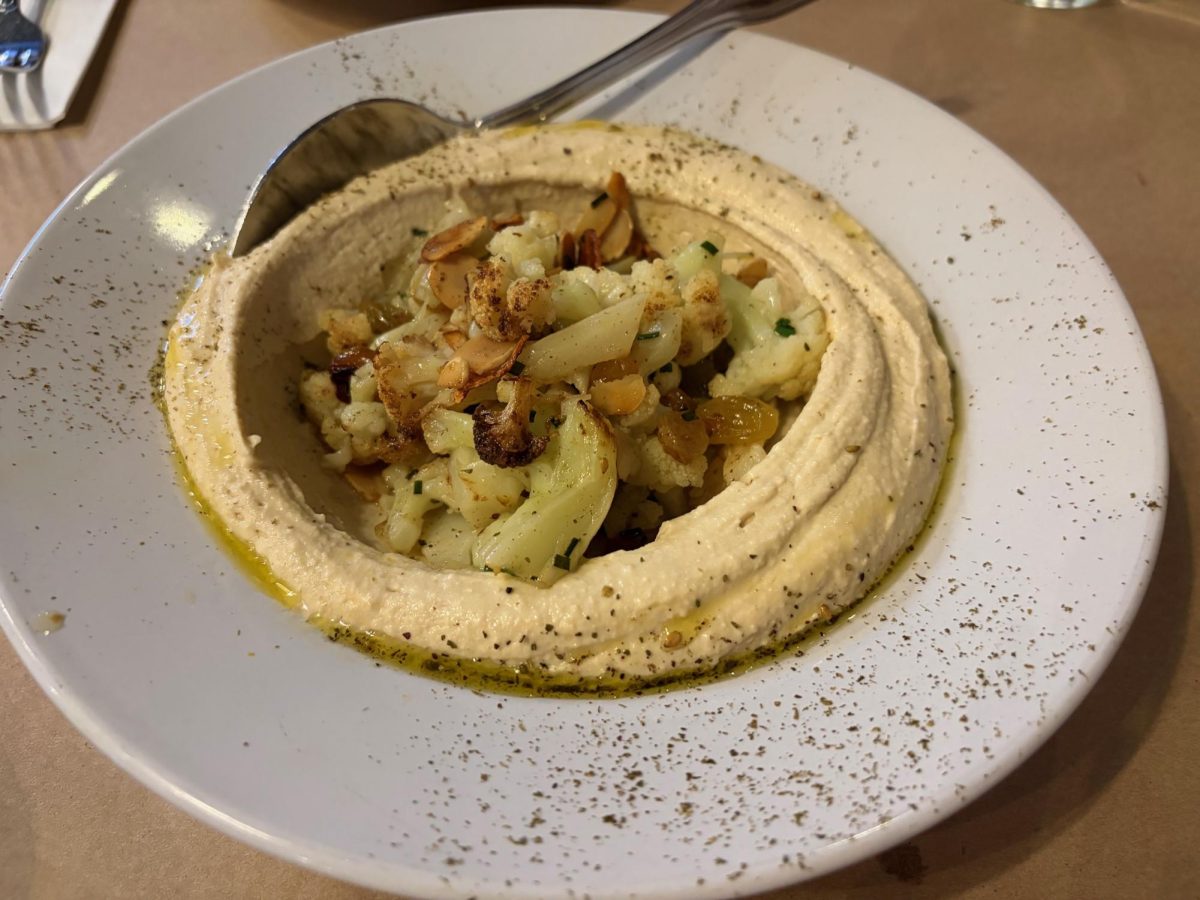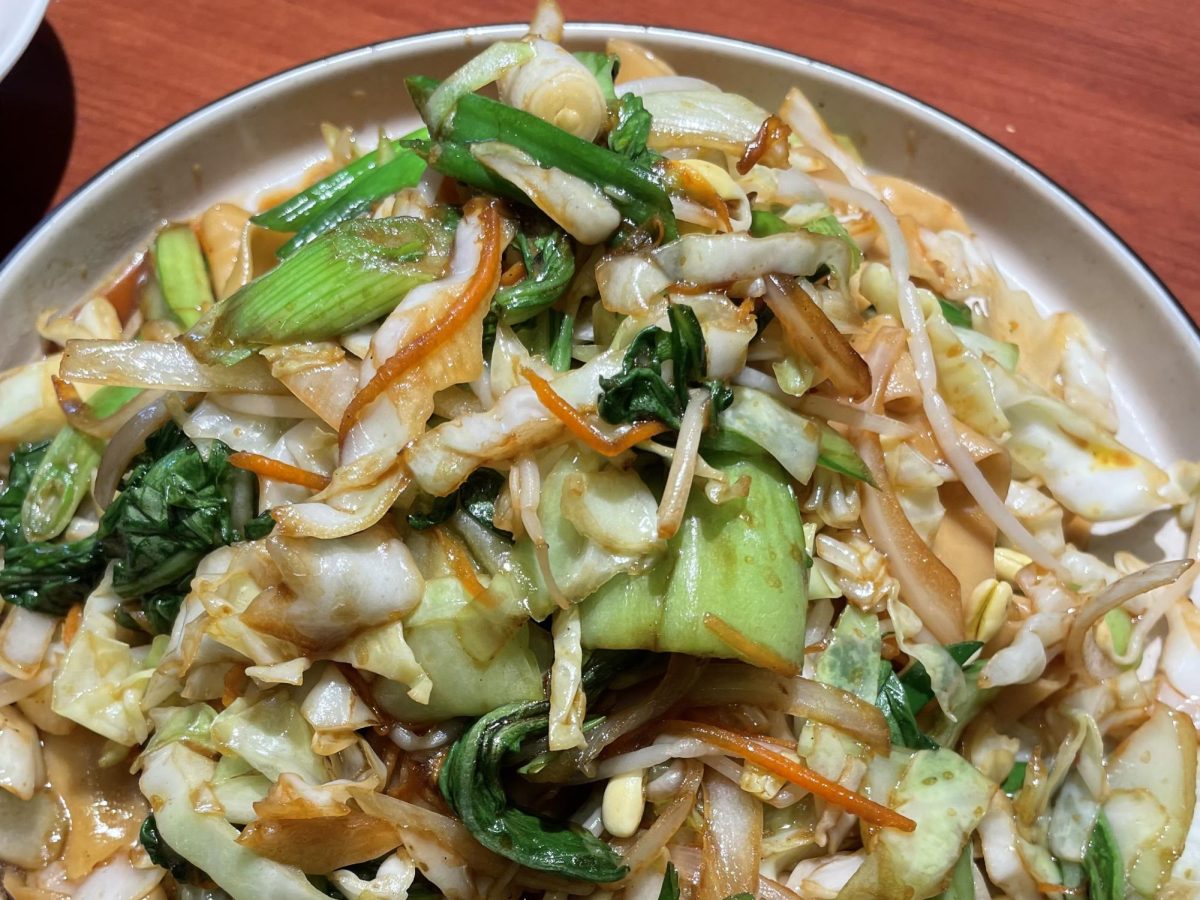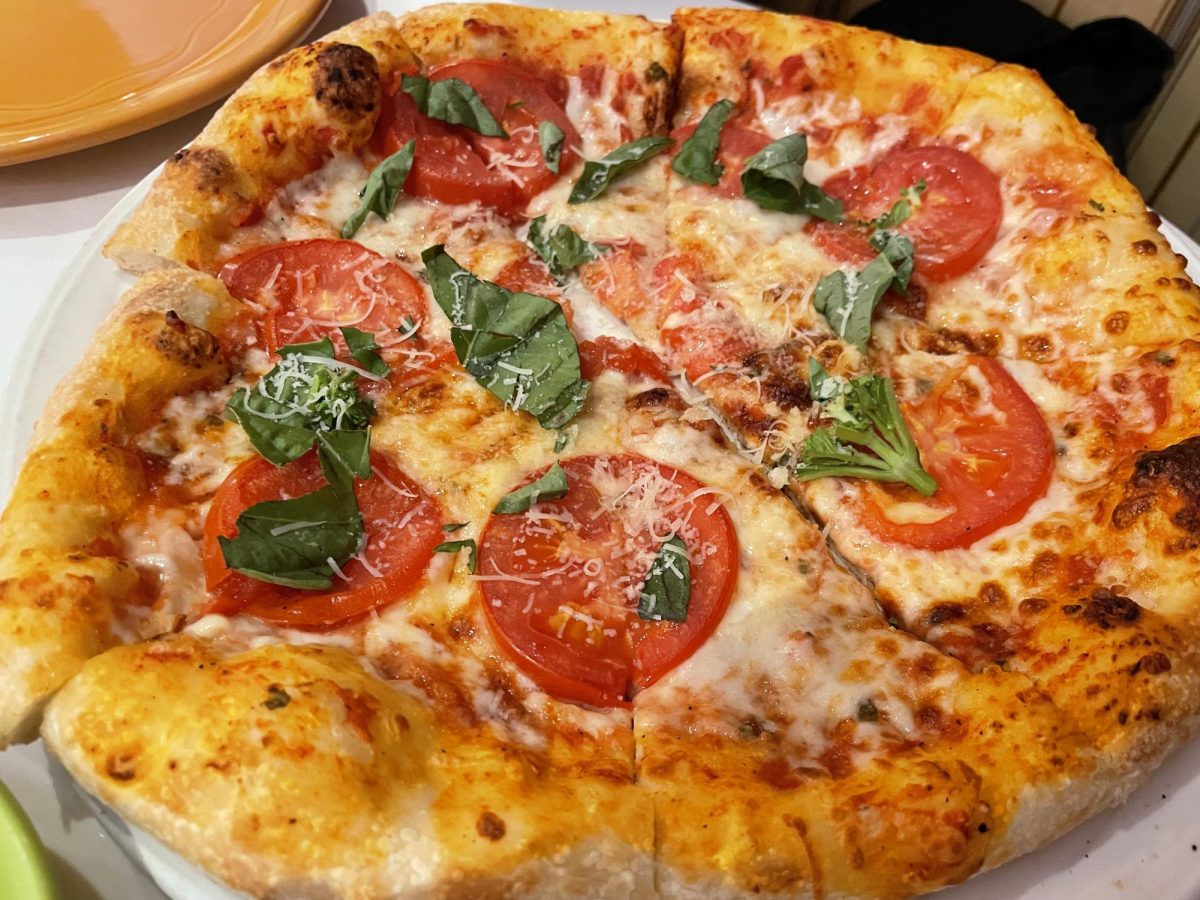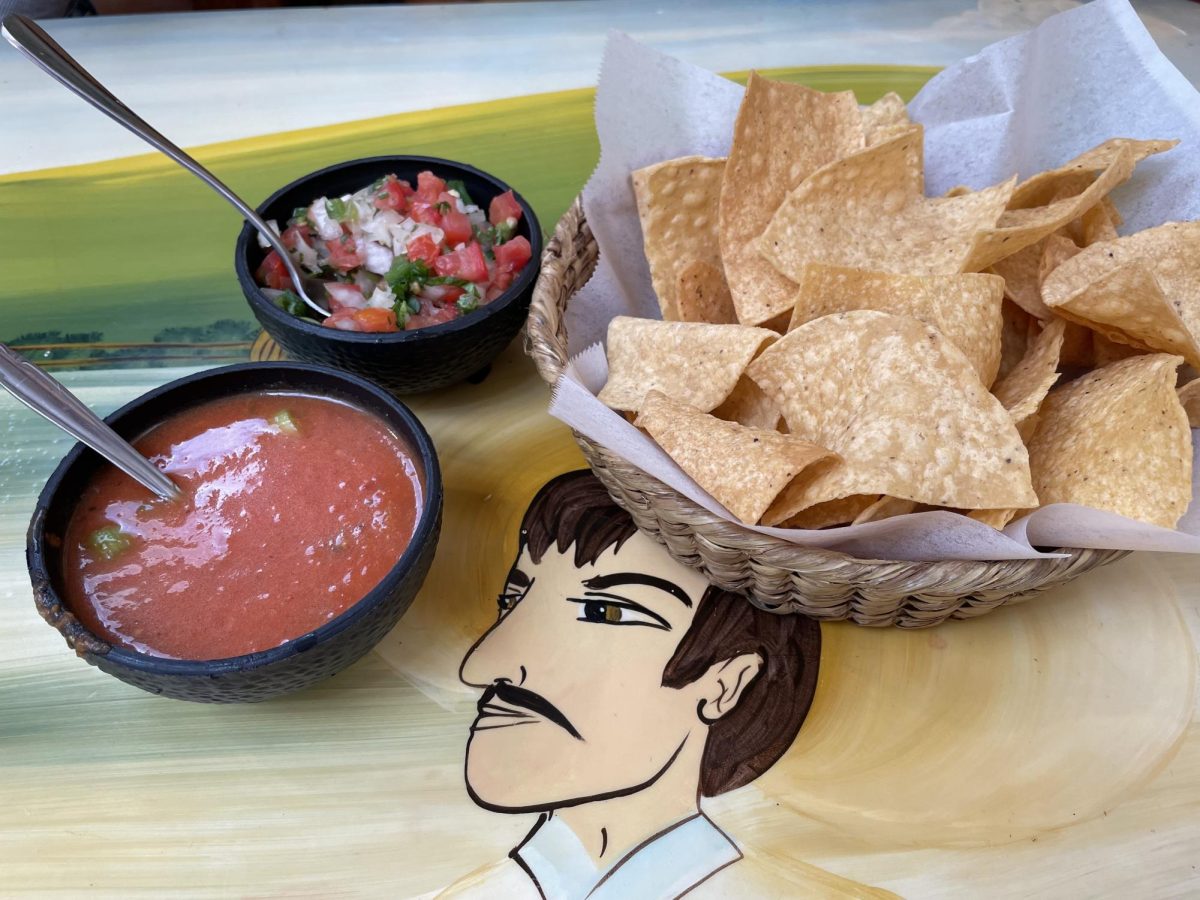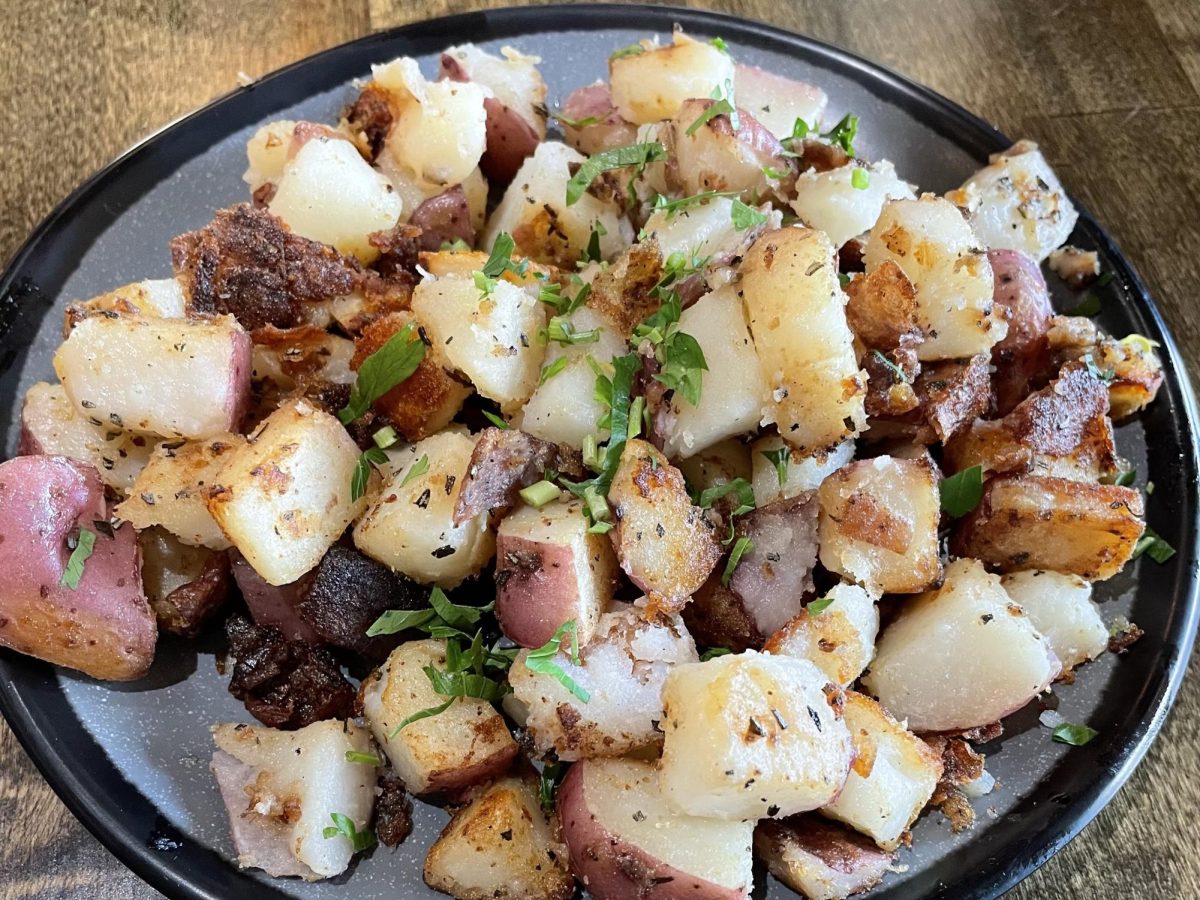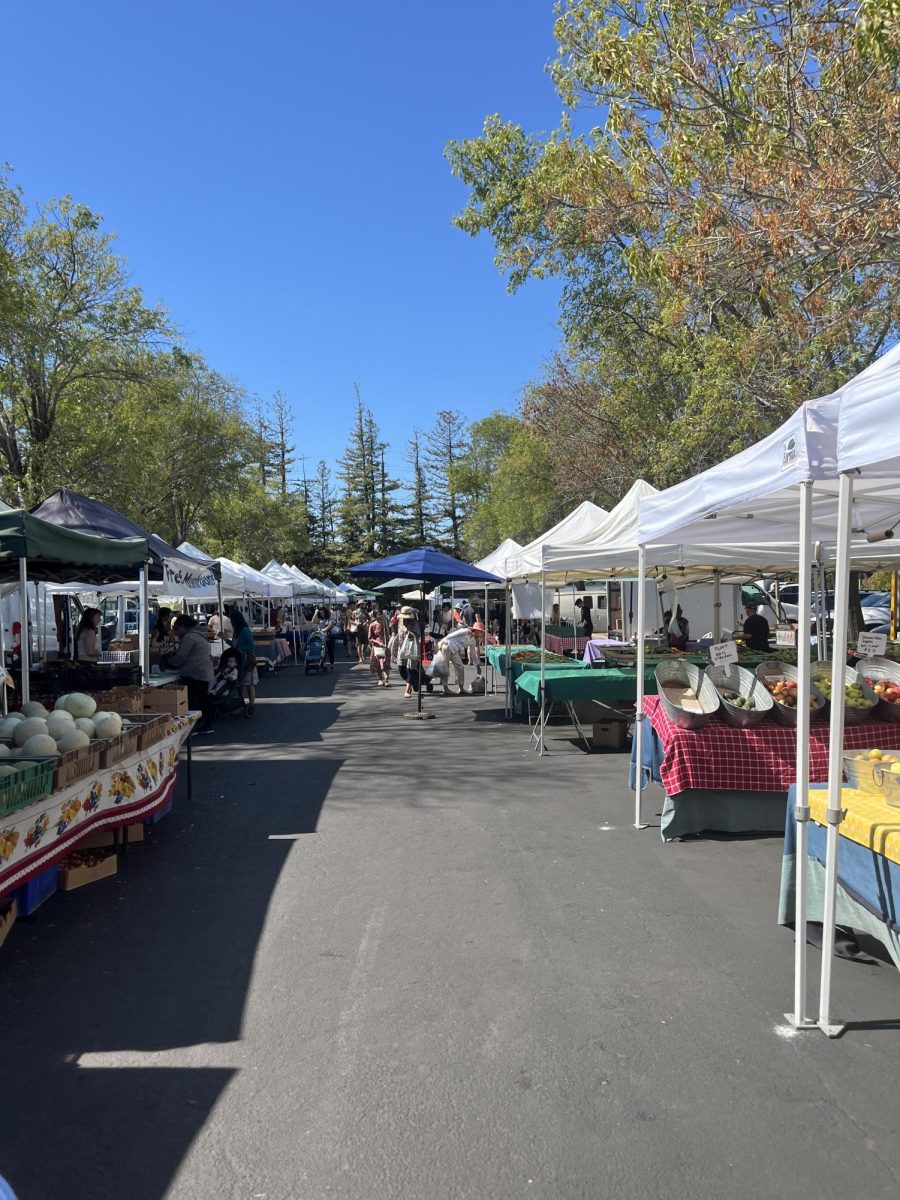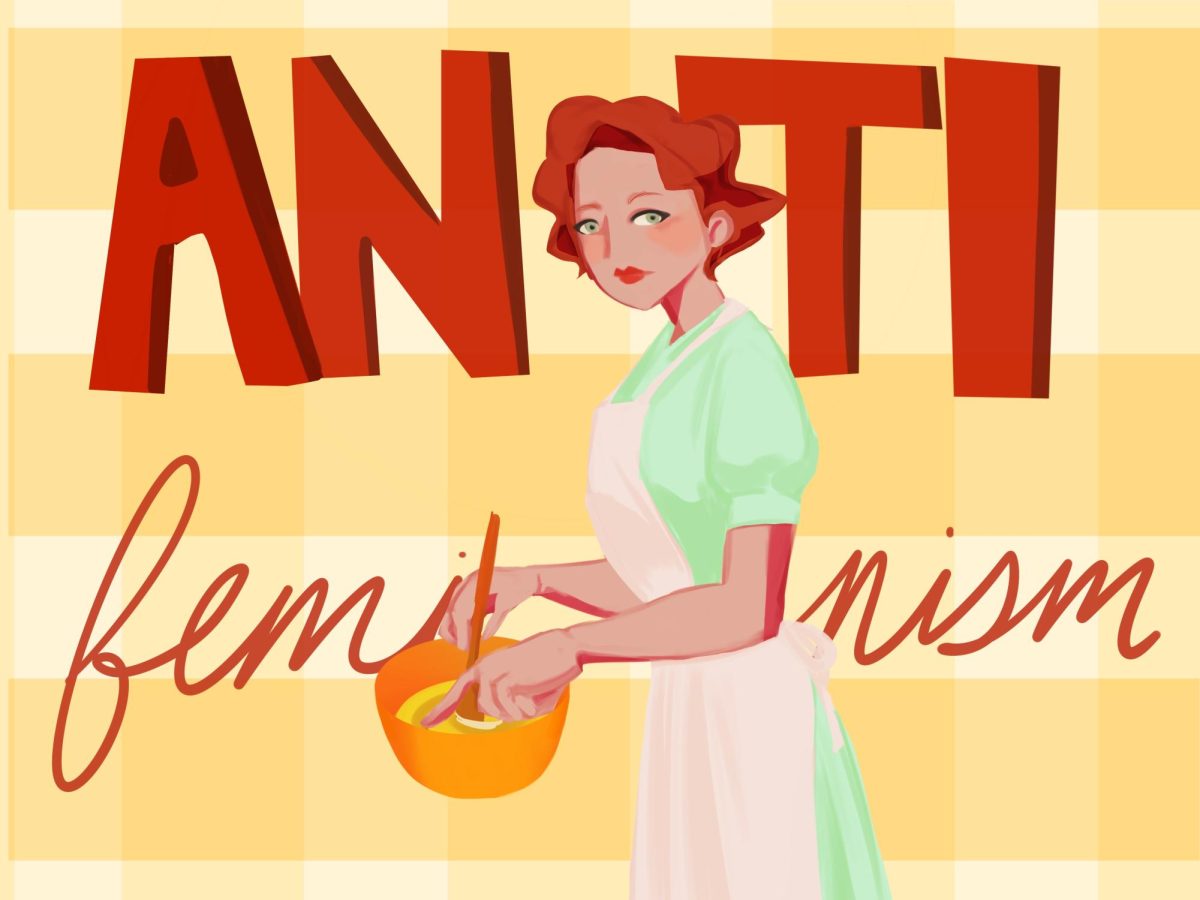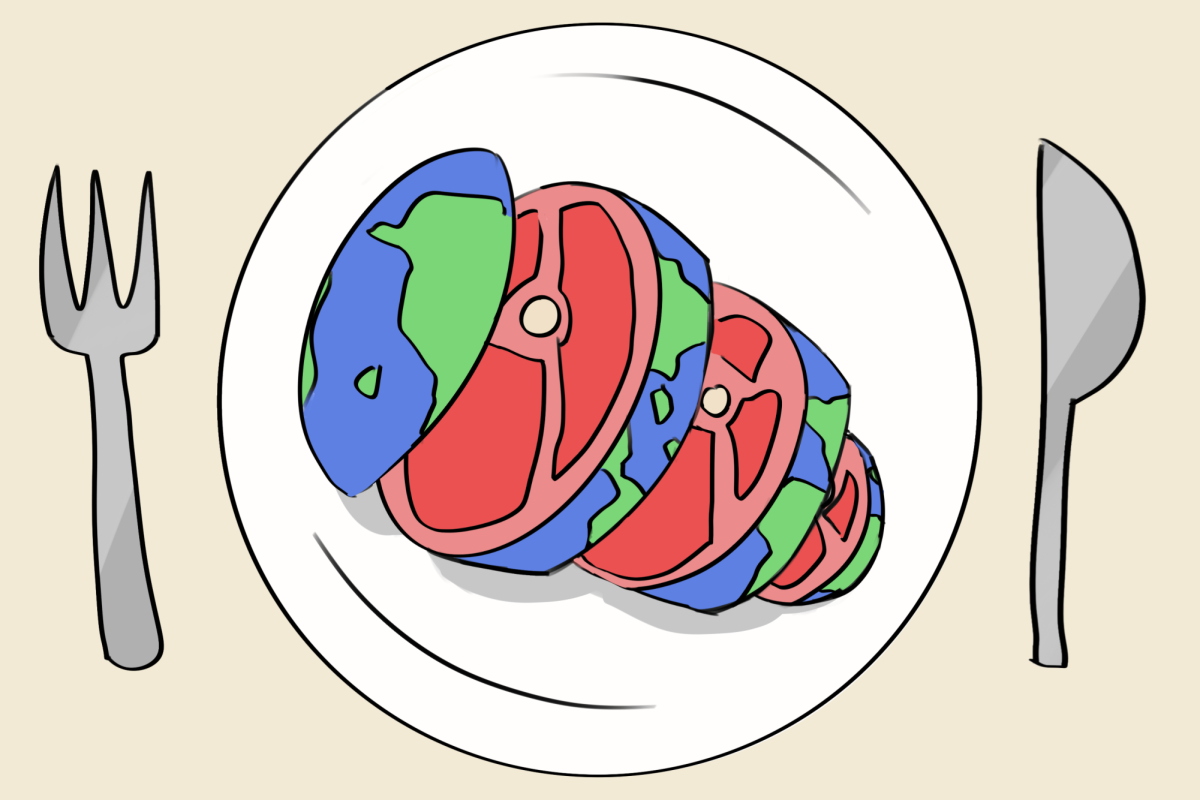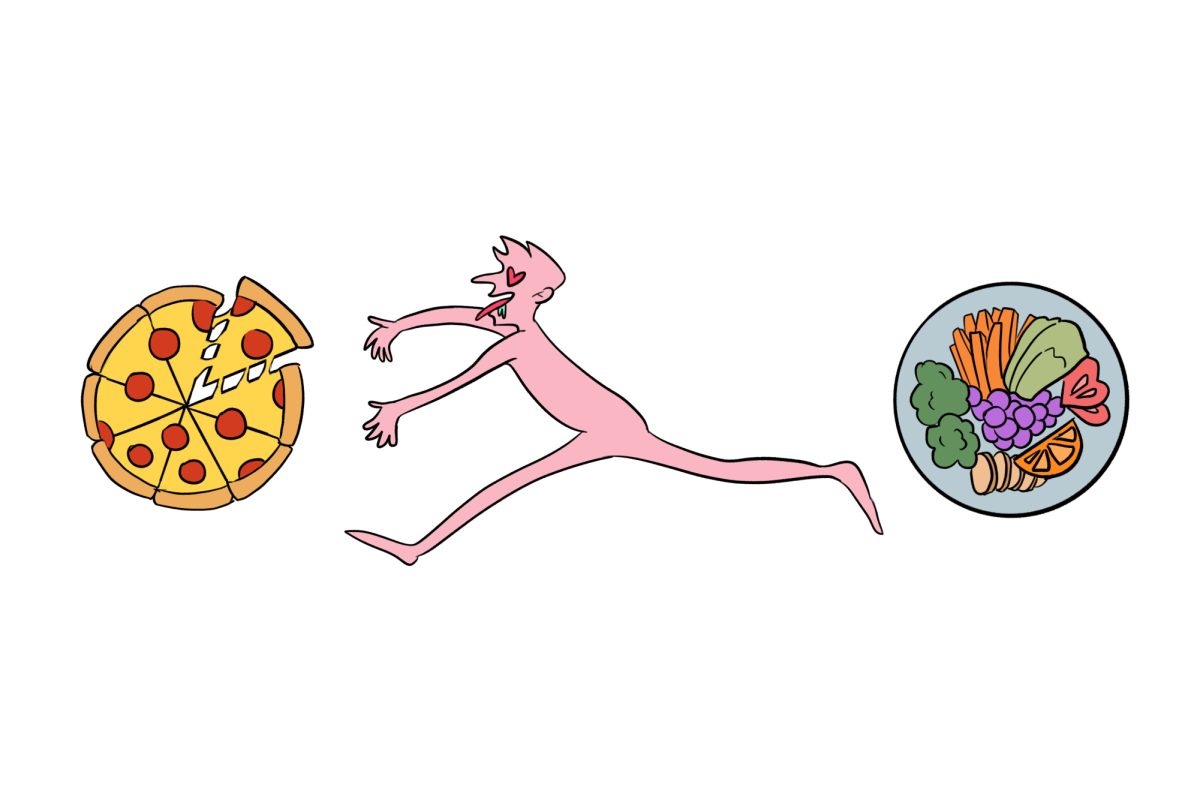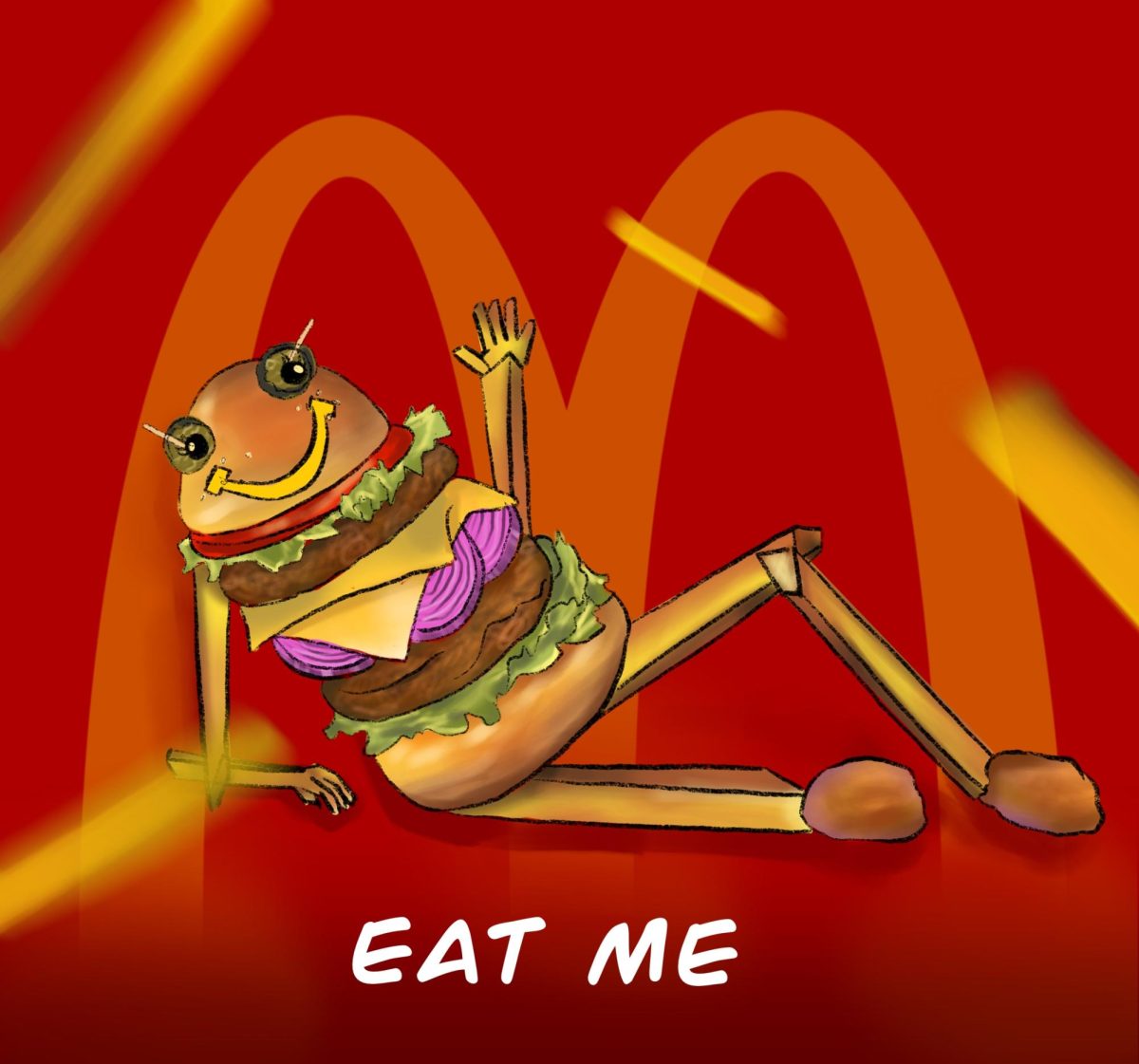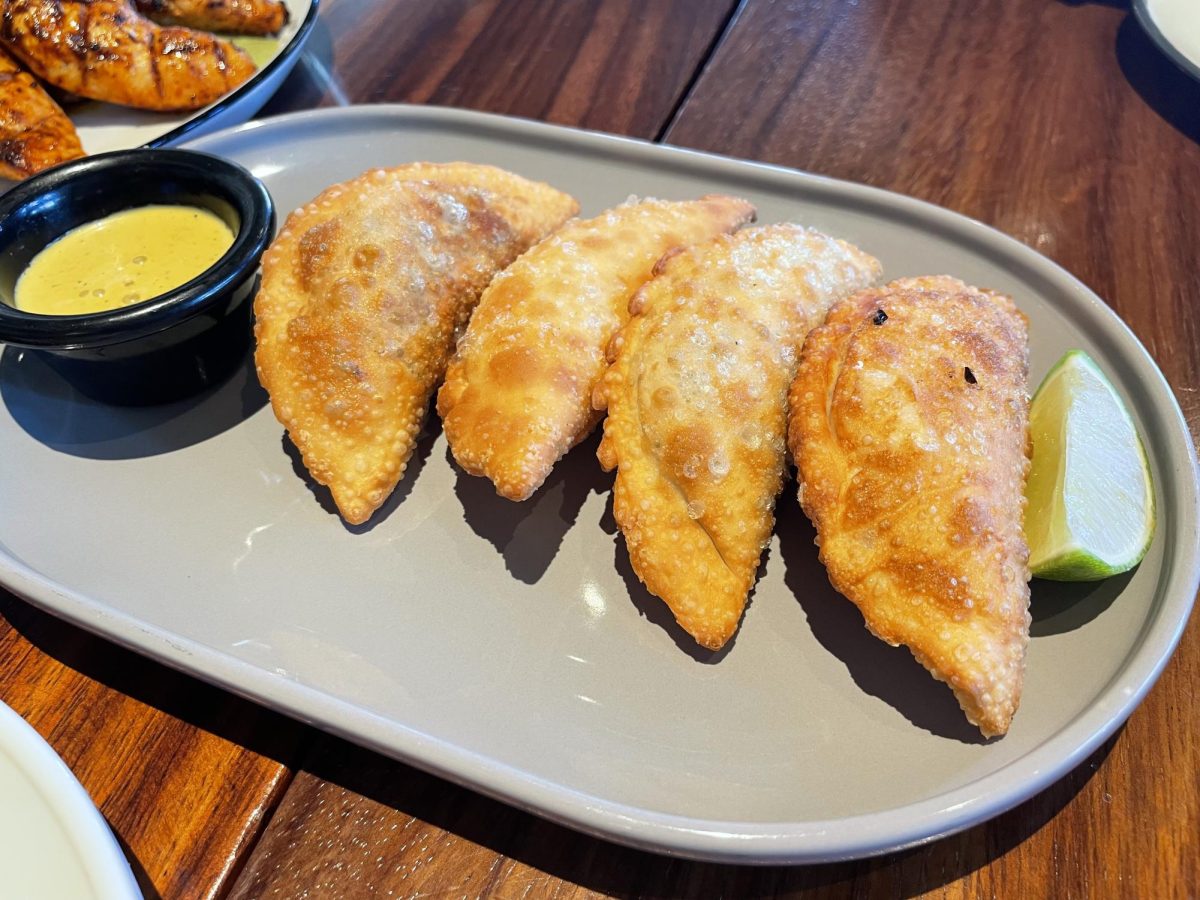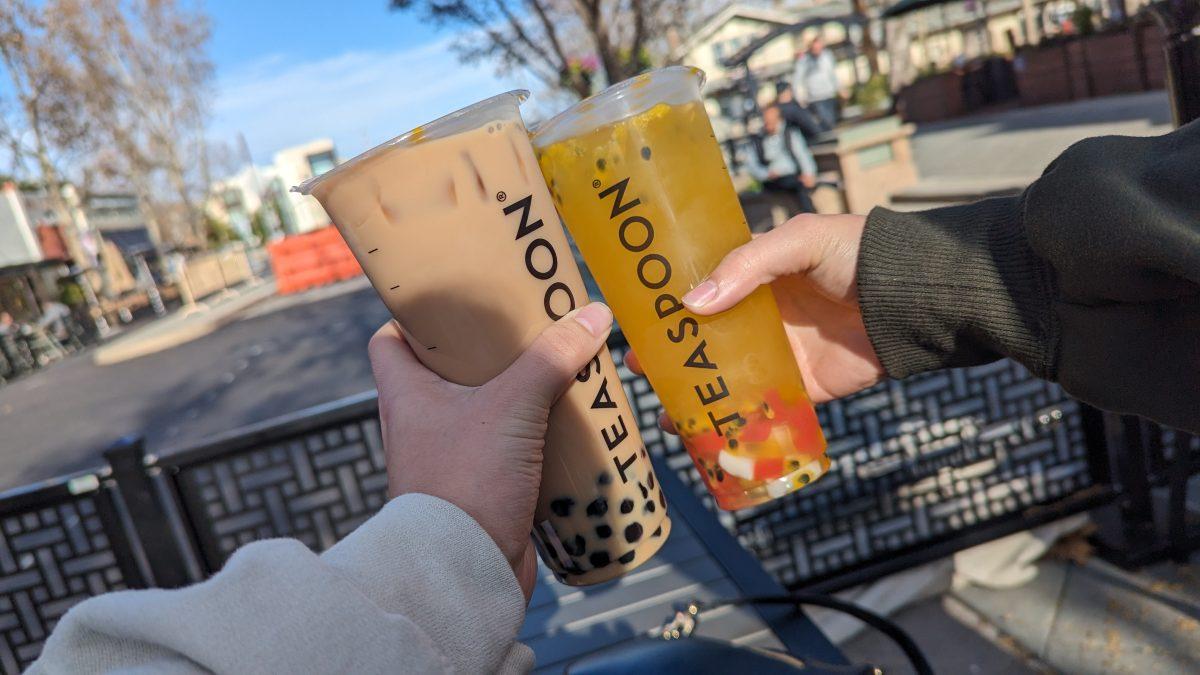Tucked away on a side street of Castro, Taqueria La Espuela serves a variety of Mexican dishes. While the restaurant may be small in size, La Espuela has a big impact. The walls, tables, and chairs are covered in vibrant painted images of cowboys. Colorful cowboy hats adorn the walls and ribbons of silver tinsel hang from the ceiling. The recurring motif of la espuela, the spur, decorates the walls and is carved into the wooden chairs.
The chatter of other diners and the low hum of the Spanish TV created a casual atmosphere inside the quaint restaurant. The service was both friendly and quick, creating a relaxed and laid back atmosphere. We decided to order two tacos (one regular and one fish), a chicken enchilada, a vegetarian burrito, and two traditional desserts—flan napolitano and churros.
Chips and Salsa (7.67/10)
The origins of the modern tortilla chip likely dates back to the time of the Aztecs in South America, when it was initially called tostadas. Similarly, salsa can also claim genesis from the Aztecs, Incas, and Mayans who created a sauce from tomatoes, chilies, and squash seeds. Salsa’s name is derived from the Latin word salsus, meaning “salted.” The dish was made popular by the Spanish conquistadors and eventually developed into multiple varieties including red (tomato) or green (tomatillo), all of which are made with chile peppers. While the American-Mexican blend “Tex-Mex” has become an American staple, the appetizer is largely frowned upon in Mexico itself. Pico de gallo, a chunkier salsa variant, literally translates to “beak of rooster.” Some believe this is because it used to be eaten by pinching the thumb and finger, making the shape of a rooster’s beak.
The chips and salsa were complimentary and came out quickly. We were served both traditional salsa and pico de gallo, and we ordered guacamole on the side. The salsa was spicier than the pico, but both were relatively mild. We enjoyed the extremely crispy texture of the chips; however, they needed more salt as they lacked flavor without any dip. Also, the guacamole, while tasting pretty typical, had more of a liquid texture.
Regular Taco (7.5/10)
Tacos originated in Mexico long before the Spanish arrived, featuring soft corn tortillas filled with ingredients like fish and other types of meat. The term “taco,” however, emerged in the 18th century from Mexican silver miners who used paper-wrapped gunpowder called taquitos during detonation. Their meals subsequently became known as tacos de minero, later shortened to tacos.
The regular taco consisted of a soft shell taco filled with shredded chicken and topped with onions, cilantro, and hot sauce. We felt that the tacos had too much chicken; however, after we removed some, it was an extremely tasty taco with the perfect amount of spice.
Fish Taco (6.5/10)
The fish taco originated in Baja California, a peninsula in northwestern Mexico. Ensenada and San Felipe both claim to be the home of the modern fish taco, which emerged in the 1950s. The dish was likely a result of Asian and European seafarers who introduced the natives to deep frying fish in the centuries prior.
Although the presentation of the fish taco with the fish, lettuce, and cilantro onion dressing seemed appealing, the dish was difficult to wrap and eat, making it impractical. The fish itself was overpowering compared to the rest of the dish, making it somewhat unpleasant. However, the dressing and toppings helped prevent total ruin by partially balancing out the competing flavors.
Chicken Enchilada (8.5/10)
Enchiladas are a traditional Mexican dish that originated with the Mayans, who created early versions of corn tortillas filled with tomatoes. The Aztecs later adapted the dish by incorporating chilies and beans; after the Spanish arrived, it evolved further with the addition of cheese and meat fillings like pork or chicken. Together, these influences have shaped the enchilada into the beloved dish it is today.
The chicken enchilada was deliciously cheesy, placed in the middle of the plate and surrounded by a pool of red sauce. The chicken to cheese ratio, as well as the sauce to enchilada ratio, was perfect, creating a delicious enchilada.
Vegetarian Burrito (8.5/10)
Burritos are a Mexican staple consisting of a tortilla containing a filling of meat, cheese, beans, and more. The name comes from burro, which means “donkey” in Spanish. While the origin of this dish is disputed, a popular theory is that they were created by a man named Juan Méndez, who sold burritos while riding around on a donkey.
The vegetarian burrito was filled with a smorgasbord of cooked and fresh ingredients: rice, beans, lettuce, tomato, guacamole, cheese, sour cream, and salsa. We appreciated the variety of textures that all the ingredients packed into the wrap, especially considering its smaller size. For spice lovers, the burrito might come across as lackluster, but it was a solid burrito that we would definitely order again.
Flan Napolitano (7.17/10)
Flan is a caramel custard dessert made of eggs, milk, and sugar. Its origins trace back to the Roman Empire, when the Romans were the first to begin domesticating chickens for their eggs. With the new surplus of eggs, the Romans began to find new ways to use them, creating the custard that we know and love today. As a Mexican version of this creamy custard, our flan was steamed instead of baked and made with cream cheese.
La Espuela’s flan napolitano was a moist, spongy delight. The thick consistency contrasted with the light caramel taste, combining into a rich, pleasant dessert. While it was the perfect amount of sweetness to balance out our savory meal, it failed to change Sahana’s dislike of flan.
Churros (9.33/10)
A universally loved dessert, churros consist of sticks of fried dough covered in cinnamon sugar. These fried treats were first introduced by Spanish shepherds in need of a portable snack for their long travels. Today, churros have become a common street food and dessert that have gained popularity worldwide, especially in much of Latin America.
The churros were the perfect finale to our meal. Fresh out of the fryer, they were warm and perfectly sweet. They matched perfectly with the sauce—a melty mixture of chocolate and condensed milk. Unfortunately, we did feel that the amount we were served was too little for the price we paid. We were also unsure if there was sweetened condensed milk piped into the middle or if the churros were slightly underbaked.
Overall, we found Taqueria La Espuela to be a solid restaurant for its variety of inexpensive Mexican food and bright atmosphere. While a great place to grab a quick bite to eat, we wouldn’t necessarily recommend it for those looking for finely crafted Mexican cuisine with an upscale dining experience.
















